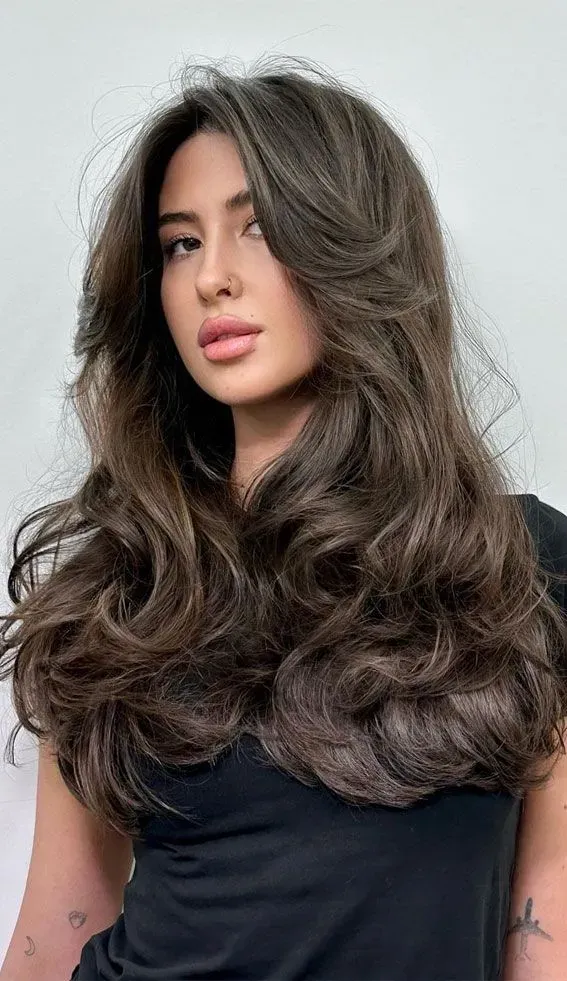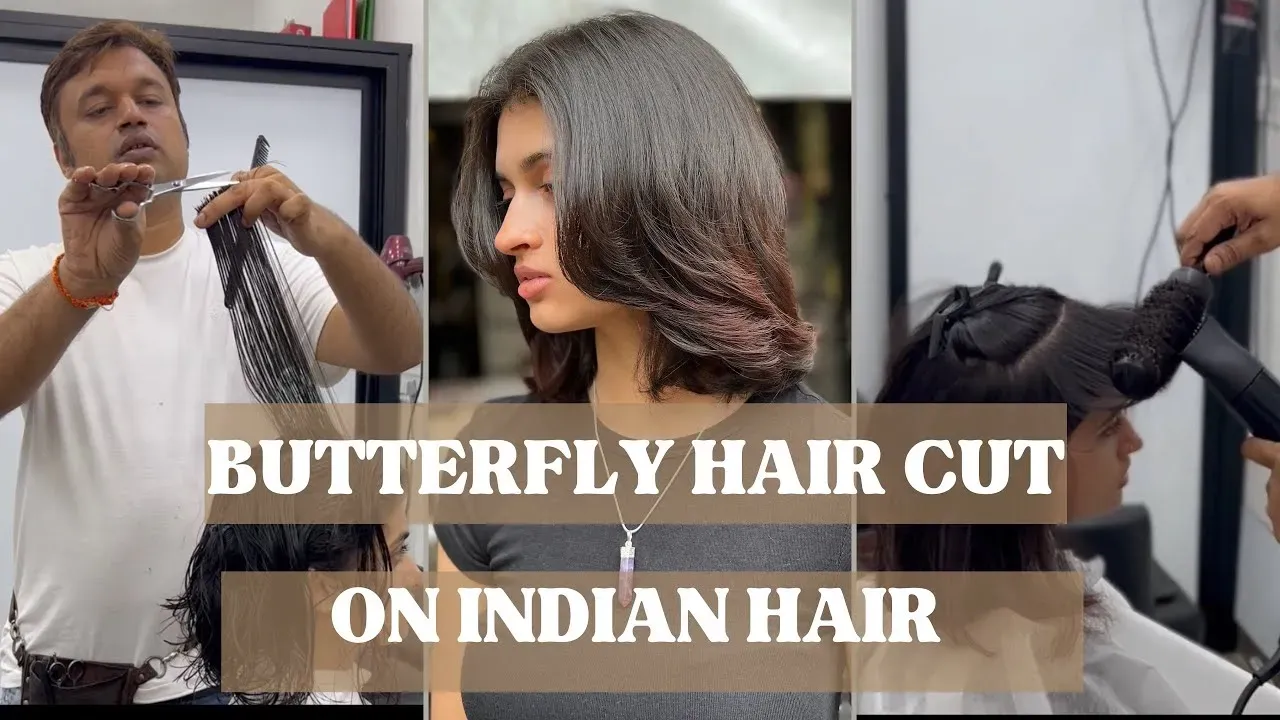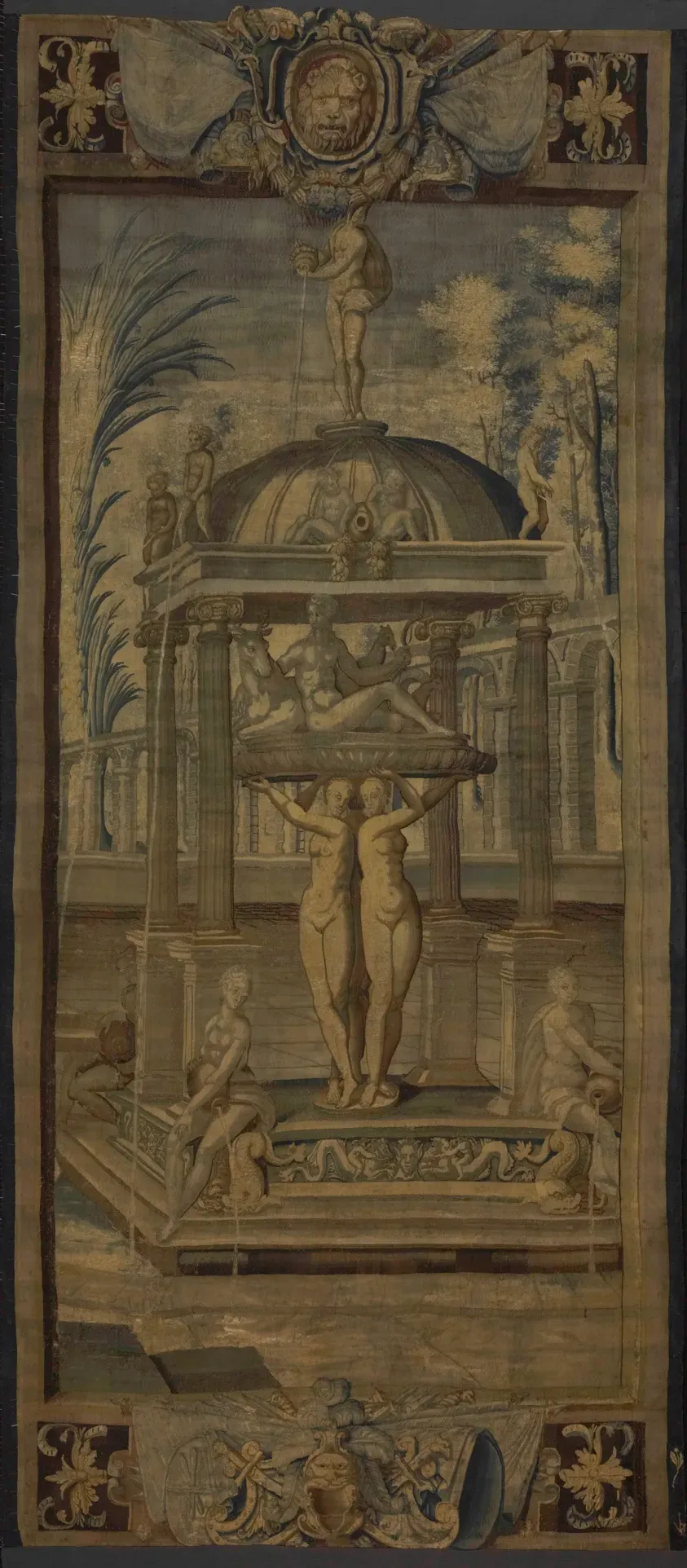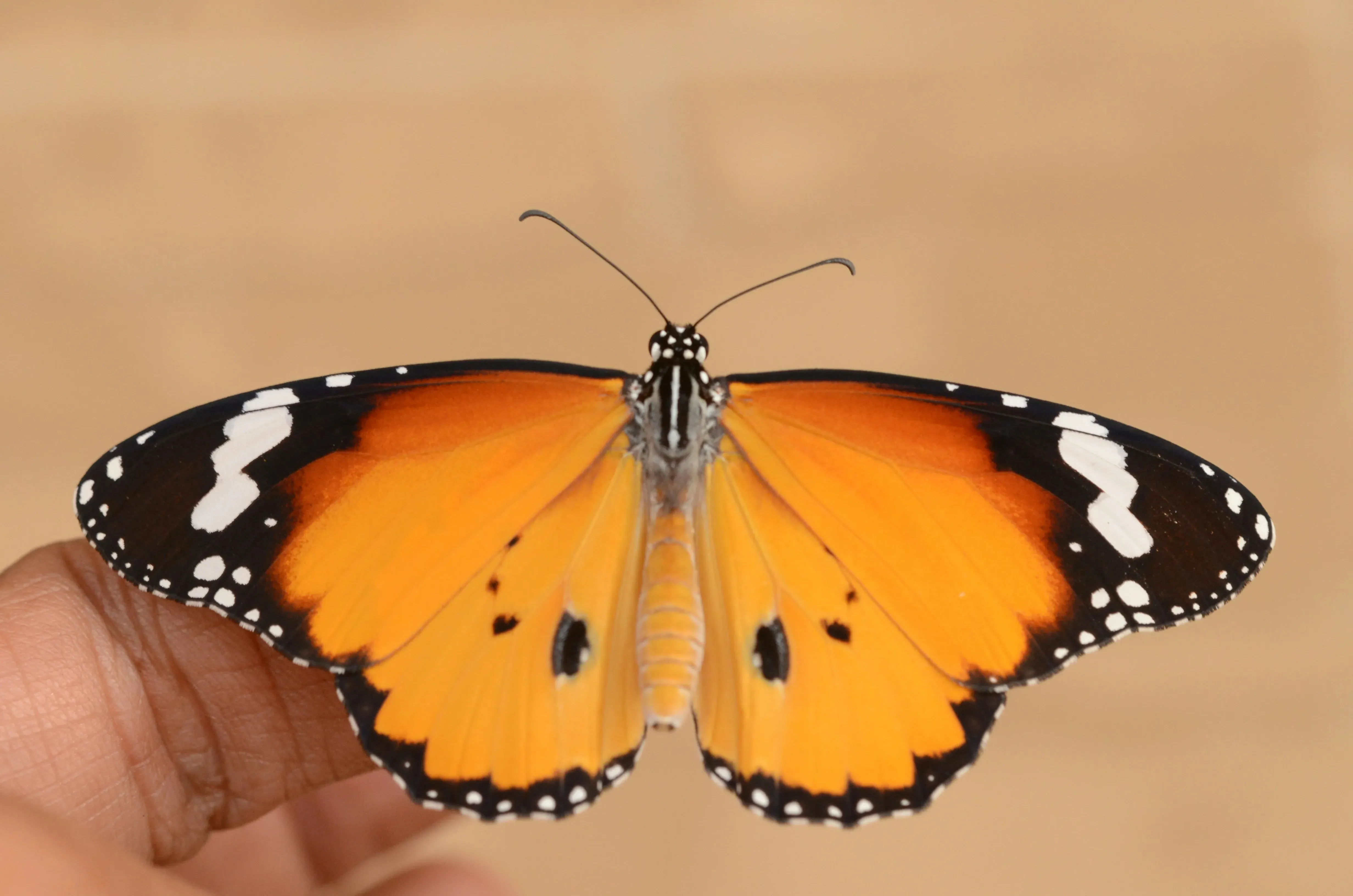Table of Contents
Scrolling through social media lately, you've probably seen this layered look everywhere. The butterfly cut has flown into popularity, especially when it comes to styling Indian hair. It's a haircut designed to give you serious volume and movement without sacrificing length, creating face-framing layers that look like wings fluttering around your face. If you've got Indian hair, which often has beautiful texture and thickness, you might be wondering if this trend is right for you and how it actually works. This article dives into why the butterfly cut is such a hit for Indian hair, what makes it unique, and how you can achieve and maintain this bouncy, layered style. We'll break down the technique, discuss suitability for different Indian hair types, and share tips for styling your newbutterfly cut indian hairso it looks salon-fresh every day. Let's get into it.
The Rise of the Butterfly Cut on Indian Hair

The Rise of the Butterfly Cut on Indian Hair
Why Everyone's Talking About It
Walk into almost any salon in India these days, or just scroll through Instagram, and you'll see it: the butterfly cut. It’s not just another layered haircut; it’s a phenomenon. This style has taken off because it promises something many people with long hair crave: drama and volume without losing significant length. Think big, bouncy layers that frame the face and cascade down, looking incredibly glamorous. It gives the illusion of shorter hair around the face while keeping the back long and lush. This visual trick is a big part of its appeal, making it feel like a fresh change without the commitment of a drastic chop.
The Celebrity Effect and Social Buzz
Let’s be honest, trends don’t just happen in a vacuum. TheThe Rise of the Butterfly Cut on Indian Hairowes a lot to celebrity endorsements and the power of social media. When Bollywood stars like Katrina Kaif or Alia Bhatt step out with this perfectly layered, voluminous look, people notice. Their stylists share the secrets, and suddenly, everyone wants the same effect. Instagram reels and TikTok tutorials break down the cutting technique and styling tips, making it feel accessible. It’s a classic case of seeing a look on someone you admire and deciding, "Yeah, I want that bounce."
As one stylist friend put it:
Perfectly Suited for Indian Hair Texture
So, why has this cut specifically become a favorite for Indian hair? A lot of it comes down to texture. Indian hair often has a natural thickness and a beautiful wavy or slightly curly texture that lends itself incredibly well to layers. The butterfly cut isn’t just about chopping randomly; it uses strategic layering to remove weight and create movement. This is key for thicker hair that can otherwise lie flat or feel heavy. The layers allow the hair to breathe and bounce, enhancing its natural volume and shape. It’s like the cut was made for hair that has a little something to work with.
Understanding the Layers: What Makes a Butterfly Cut?

Understanding the Layers: What Makes a Butterfly Cut?
so what exactly is happening with this cut that makes it look so different? It’s all about the layers, but not just any layers. Think of it as two haircuts in one, cleverly blended together. You have shorter, face-framing layers that are cut around the front, usually hitting somewhere around the chin or collarbone. These are the "wings" that give you that lift and volume right where you want it. Then, you have longer layers throughout the back, which keep the length and weight. The magic happens in how these two sets of layers connect, or sometimes intentionally *don't* fully connect, creating that seamless, voluminous look that bounces and moves like, well, a butterfly.
Key layer types in a butterfly cut:
- Face-Framing Layers: Shorter layers concentrated around the face, creating lift and defining features.
- Crown Layers: Layers at the top of the head to build volume and prevent flatness.
- Internal Layers: Layers cut within the hair to remove weight and add movement without being immediately visible on the surface.
- Length-Preserving Layers: Longer layers in the back that maintain the overall length of the hair.
Making Your Butterfly Cut Work for Indian Hair Types

Making Your Butterfly Cut Work for Indian Hair Types
Finding a Stylist Who Gets Indian Hair
so you're sold on the idea of abutterfly cut indian hair, but here’s the critical first step: finding someone who actually knows what they’re doing with Indian hair. This isn't just any hair; it often has unique density, texture, and growth patterns. A stylist who primarily works with finer, straighter hair might not understand how to layer Indian hair so it falls correctly and maintains its shape as it grows out. Look for stylists with experience in cutting thicker, wavier, or curly textures. Ask around, check their social media for examples of their work on similar hair types, or even ask for a quick consultation before you commit. Getting this cut wrong means layers that look choppy, hang limp, or just don't blend, which is exactly the opposite of the effortless vibe you're going for.
Tailoring the Layers to Your Texture
The beauty of the butterfly cut is its adaptability, but it’s not a one-size-fits-all deal, especially with the range of textures in Indian hair. If your hair is on the wavier or curlier side, the layers need to be cut carefully to encourage your natural pattern, not disrupt it. Too many short layers can make curly hair look like a mushroom cloud. For straighter, thicker Indian hair, the layers are essential for removing weight and creating movement that wouldn't be there otherwise. Discuss your specific texture with your stylist. Show them pictures of butterfly cuts on hair similar to yours, not just the perfect-blowout version you saw on Pinterest. They can adjust the angle and length of the layers to best complement your natural texture and how you usually style your hair.
Consider your hair texture when planning your cut:
- Wavy Hair: Layers should enhance waves, not fight them. Avoid overly blunt cuts.
- Curly Hair: Layers need to be strategic to prevent frizz and maintain curl definition. Dry cutting can be helpful.
- Straight Hair: More internal layers might be needed to create volume and movement without looking choppy.
Considering Density and Face Shape
Indian hair is often known for its density, which is fantastic for volume but can be a challenge if not managed correctly with layers. A good butterfly cut will take your density into account. If you have very thick hair, the stylist might use techniques like point cutting or texturizing within the layers to remove bulk and make the style lighter and bouncier. If your hair is less dense, they might focus more on the face-framing layers to create the illusion of fullness around the face. Your face shape matters too. The shortest face-framing layers can be customized to highlight your best features – maybe hitting just below the chin to elongate the face, or sweeping across the cheekbones. A skilled stylist will know how to tweak the standard butterfly cut to flatter your specific features and hair thickness.
Styling and Maintaining Your Butterfly Cut Indian Hair

Styling and Maintaining Your Butterfly Cut Indian Hair
Bringing the Bounce to Life: Styling Your Layers
Alright, you’ve got the cut. Now comes the fun part – making those layers pop. The whole point of abutterfly cut indian hairis volume and movement, and that often requires a little heat styling. A round brush and a blow dryer are your best friends here. Focus on lifting the roots, especially the shorter face-framing pieces. Blow-drying these forward and then sweeping them back creates that gorgeous, wing-like effect. For the longer layers in the back, you can give them a slight curl or just a smooth finish with the round brush. If you prefer less heat, foam rollers or velcro rollers placed strategically, especially on the top and front sections after a rough dry, can give you that bouncy finish. Don't forget a heat protectant spray; Indian hair is beautiful but still needs shielding from damage.
Think of it this way: the cut gives you the potential for volume, but styling unlocks it. It's like having a sports car; you need to actually drive it to feel the speed.
Keeping It Fresh: Maintenance Tips
Maintaining your butterfly cut isn't rocket science, but it does require consistency. Because of all those layers, regular trims are pretty important. You don't want the shorter pieces to become straggly or the longer layers to lose their shape. Aim for a trim every 8-12 weeks, depending on how fast your hair grows and how sharp you want the layers to look. Using sulfate-free shampoos can help preserve your hair's natural oils and prevent dryness, which is key for keeping the layers looking healthy and not frizzy. Deep conditioning treatments once a week or every two weeks will keep your hair soft and manageable, making styling much easier. And seriously, invest in a good quality hair tie that doesn't snag or break your hair, especially when pulling back those precious layers.
Quick maintenance checklist:
- Schedule trims every 8-12 weeks.
- Use gentle, sulfate-free hair products.
- Incorporate weekly deep conditioning.
- Protect hair from excessive heat.
- Use hair ties that won't cause breakage.
Wrapping Up Your Butterfly Cut Journey
So, we've walked through the buzz around the butterfly cut and why it's become a go-to for many with Indian hair. It’s clear this isn't just another fleeting trend; it's a strategic layering technique that offers significant volume and dynamic movement, working well with the natural texture and density often found in Indian hair. Getting the cut right is key, as is knowing how to style it to maximize those face-framing layers and overall bounce. Whether your hair is wavy, straight, or has some curl, the butterfly cut offers a adaptable framework. It’s a style that, when executed properly, can refresh your look, adding life and dimension without compromising significant length. It’s less about a drastic change and more about enhancing what you already have, giving your hair a lift and a fresh shape that’s both modern and manageable.